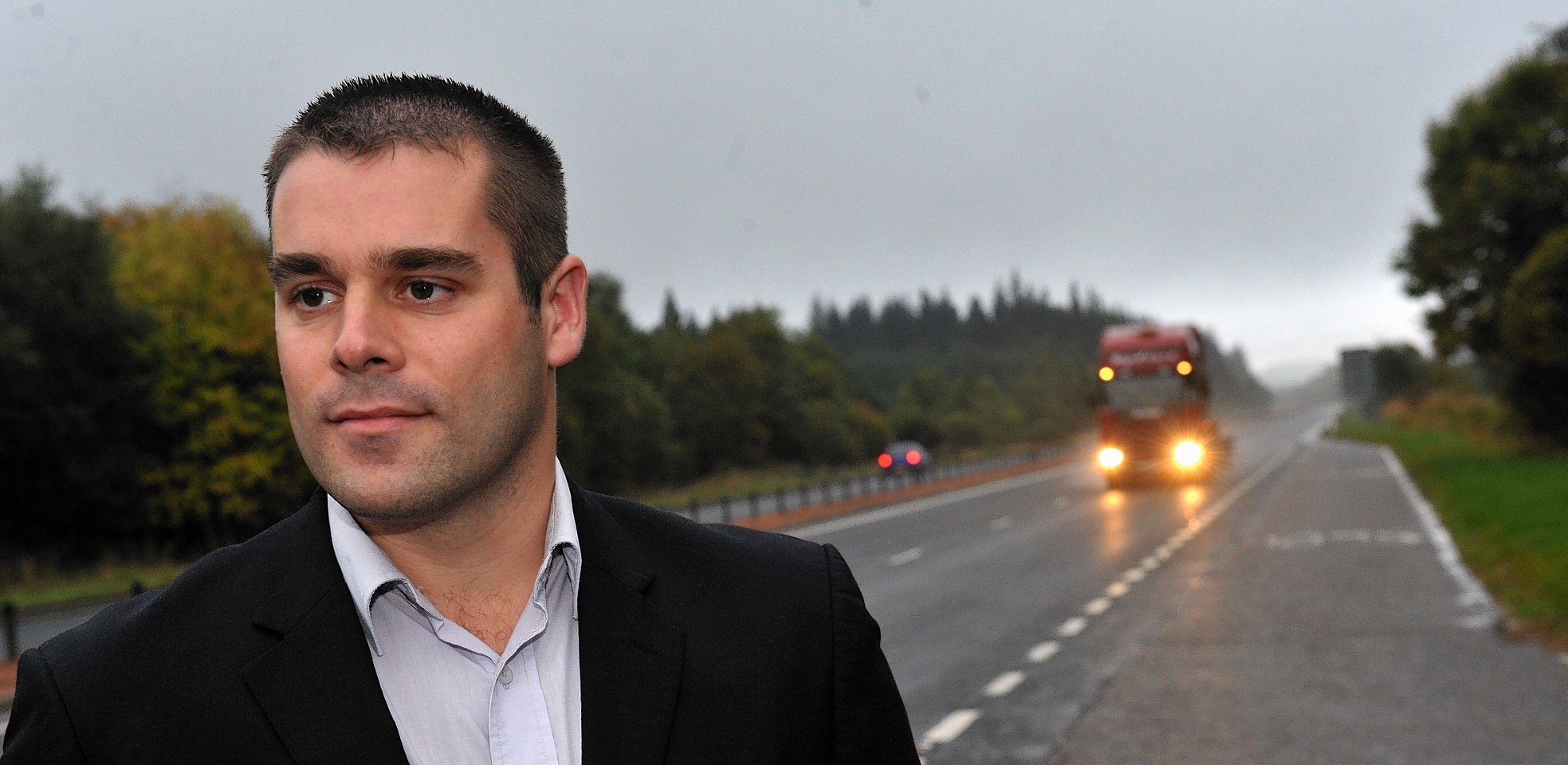On the third day of our A9 series, Jane Candlish hears whether the average speed cameras will ease the frustration of driving on the busy trunk road.
It is one of the perennial problems of the A9 Inverness-Perth road.
You’re stuck behind a slow-moving vehicle and there is no opportunity to overtake.
Your rear-view mirror shows a snaking line of traffic which seems to get longer and longer each time you snatch a glance.
Frustration grows for miles and miles until you reach that dual carriageway section when you can cruise past the obstacle.
The issue of whether the average-speed cameras will relieve or increase this frustration is one of the main points of contention between the scheme’s supporters and opponents.
Campaigners trying to put the brakes on the cameras scheme fear they will cause more frustration – and possible carnage – as drivers put their foot down to get past slow traffic before the end of the dual carriageway stretches.
But members of the A9 Safety Group claim the cameras will create a steady flow of vehicles, helped by the decision to run a pilot scheme to increase the speed limit for HGVs to 50mph.
Campaigner Mike Burns, of A9 Average Speed Cameras Are Not The Answer, says the group does not understand the road.
After travelling the route twice a week when he lived in Glasgow, he said he believed there was “something peculiar” about the A9.
He said: “It’s a long stretch of road, a vast expanse of nothing, one of the worst. When you get on it, you feel like you’ve got to keep going until the end.
“I do understand the concept. You slow the traffic down, you reduce the severity of accidents – that’s what they’re banking on. But you will never stop all accidents.
“Their figures show they expect the rate to rise for the first year while people get used to the cameras and then go down.
“But by the time it goes down, we’ll have dual carriageways.
“We will still have to deal with the accidents and closures.
“As gruesome as it sounds, there will also be deaths. I don’t think we can avoid that.
“My initial worry was that cameras will slow traffic down, and increase the frustration. If frustration increases, the riskier the overtaking, which cameras do not catch.
“That’s what’s happening now. Drivers are reporting seeing riskier overtaking. Cameras don’t catch any of that and people are genuinely scared.”
Mr Burns says he fears the average-speed cameras could contribute to multiple vehicle pile-ups.
He said: “The way the A9 works is that we have mad overtaking on dual carriageways. You’ve been stuck in a really slow zone with risky overtaking. Then you get to the dual carriageway and more people put their foot down to get past because they’ve been stuck at 30mph, and cram back in at the end. That to me just spells a recipe for disaster.
“I hope it never happens.”
Stewart Leggett, chairman of the A9 Safety Group, conceded there would be a level of frustration until the road was fully dualled.
He said: “There is a perception about cameras increasing frustration and I find it an important aspect to consider.
“At the moment there is regularly a huge variation in vehicle speed, HGVs going at 40mph and some cars wishing to travel at twice that. And that is a primary source of frustration.
“With the 50mph HGV pilot and new cameras, the fastest vehicles will be doing 60mph and the slowest will be at 50mph.
“Therefore, there is a very narrow 10mph speed variation between nearly all vehicles.
“It will create a more attractive driving environment and frustration will be reduced.
“For the same reasons, the desire to overtake will be reduced. We know from seven years experience on the A77 that the cameras do have a calming effect on the traffic and drivers become more realistic about their journey times.”
Neil Greig, of the Institute of Advanced Motorists, said: “There’s been a long-standing debate about fixed cameras, about people speeding up and slowing down around them causing more crashes, which has never been proven.
“I have some sympathy for this and understand where they are coming from but there isn’t really any scientific evidence to back the idea that frustration will increase any more than it is at the moment.”










